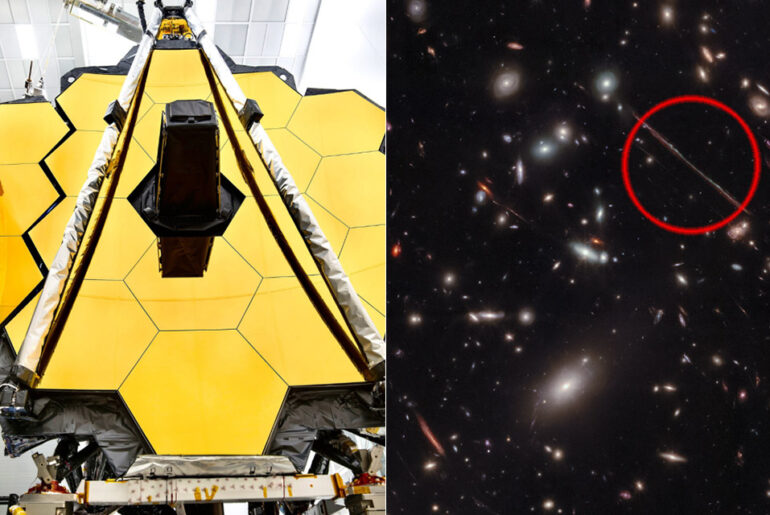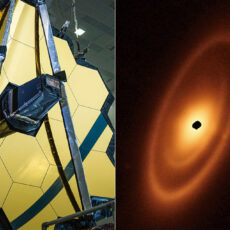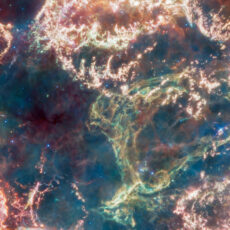
Although not as strange as this cosmic question mark, NASA’s James Webb Space Telescope captured a pair of gravitational arcs in the El Gordo galaxy cluster located over 7 billion light-years away. What you notice first in this image is a bright arc in red at the upper right, nicknamed “El Anzuelo” (The Fishhook), with its light taking 10.6 billion years to reach Earth.

El Anzuelo’s red color is due to a combination of reddening from dust within the galaxy itself and cosmological redshift from its extreme distance. The second gravitational arc is pencil-thin and nicknamed “La Flaca” (the Thin One). This is another lensed background galaxy whose light also took nearly 11 billion years to reach Earth. Why were astronomers observing El Gordo with Webb? This galaxy cluster acts as a natural, cosmic magnifying glass through a phenomenon known as gravitational lensing, as its powerful gravity bends and distorts the light of objects lying behind it, similar to an eyeglass lens.
- BRIGHT, SHARP VIEWS ANYWHERE: Unlike many beginner telescopes, this quality refractor features fully coated glass lenses and a 70mm aperture for...
- PERFECT FIRST TELESCOPE FOR BEGINNERS: Designed for adults and kids to enjoy together, this beginner-friendly telescope sets up in minutes and...
- EASY NO-TOOL SETUP: No complicated assembly or tools needed. The full-height tripod and telescope tube set up in seconds and pack neatly into the...

We examined whether the properties of these galaxies are any different than the ultra-diffuse galaxies we see in the local universe, and we do actually see some differences. In particular, they are bluer, younger, more extended, and more evenly distributed throughout the cluster. This suggests that living in the cluster environment for the past 6 billion years has had a significant effect on these galaxies,” said Timothy Carleton of Arizona State University.







